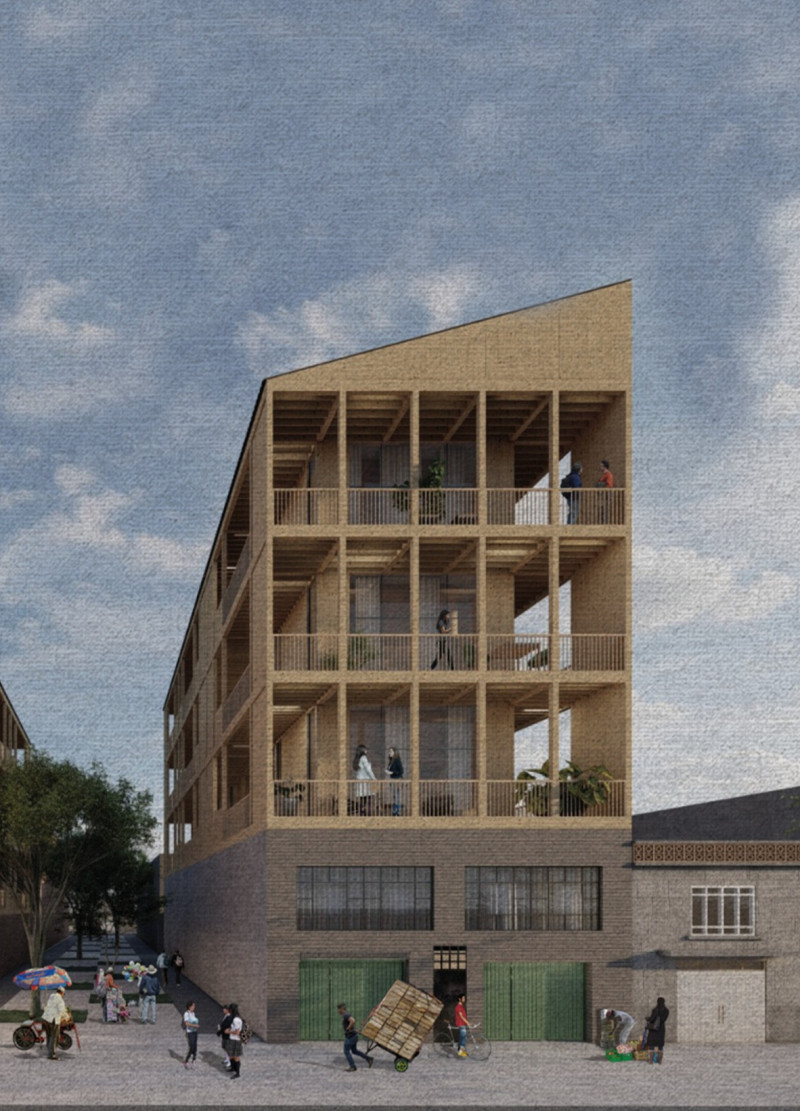5 key facts about this project
The project is primarily designed for [insert primary function, e.g., residential, commercial, educational], offering a multipurpose environment that encourages interaction and engagement among its users. This intention is evident in the spatial layout, which incorporates open areas that facilitate movement and collaboration while also providing more intimate spaces for reflection and privacy. The design successfully balances communal and personal needs, ensuring that the space serves a wide demographic.
Materiality plays a crucial role in the overall aesthetic and sustainability of the project. The choice of materials, including concrete, glass, metal, and wood, signifies a commitment to durability and environmental responsibility. Each material is selected not only for its performance but also for its contribution to the overall sensory experience of the space. For instance, expansive glass panels allow natural light to flood the interiors, creating a connection between the indoors and the surrounding environment. Meanwhile, the use of natural stone anchors the design to its location, providing a tactile quality that resonates with the site’s geological characteristics.
The architectural details are meticulously crafted, from the sleek lines of the facade to the thoughtful integration of landscaping. These elements work together to create a cohesive design narrative that is both practical and aesthetically pleasing. The facade, with its rhythmic interplay of solid and void, invites curiosity and exploration, encouraging passersby to engage with the building on a deeper level. The strategic placement of windows not only enhances the aesthetic appeal but also ensures the building remains energy-efficient, reducing the reliance on artificial lighting and minimizing environmental impact.
Unique design approaches are observed throughout the project, particularly in the innovative use of space and the incorporation of sustainable practices. For example, green roofs and rainwater harvesting systems have been integrated into the design, promoting ecological balance and enhancing the building's sustainability credentials. These measures reflect a conscious effort to minimize the ecological footprint of the architecture while providing educational opportunities for users regarding environmental stewardship.
Additionally, the project embraces connectivity, with walkable pathways that link the building to nearby public spaces, fostering a sense of community engagement. The design encourages users to interact not only within the building but also with the surrounding environment, creating a seamless transition between private and public realms. This emphasis on accessibility is further enhanced by the thoughtful zoning of spaces, ensuring that all areas are functional and inviting.
In examining the architectural plans and sections, one can appreciate the careful thought that has gone into each detail of the project. The architectural designs encompass various layouts, addressing diverse needs and uses across different segments of the building. These plans provide insights into how each space has been configured to promote whether it be collaboration in communal zones or tranquility in private areas.
Overall, this architectural project exemplifies a modern approach to design that prioritizes sustainability while fostering community. Every detail, from the material choices to the spatial configurations, has been driven by a commitment to creating enriching experiences for its users. For those interested in further exploring the project, consider reviewing the architectural plans, sections, and designs to gain a comprehensive understanding of the thoughtful ideas that inform this work. Engaging with these materials will provide valuable insights into the nuances of the design and how it represents a holistic approach to contemporary architecture.


























